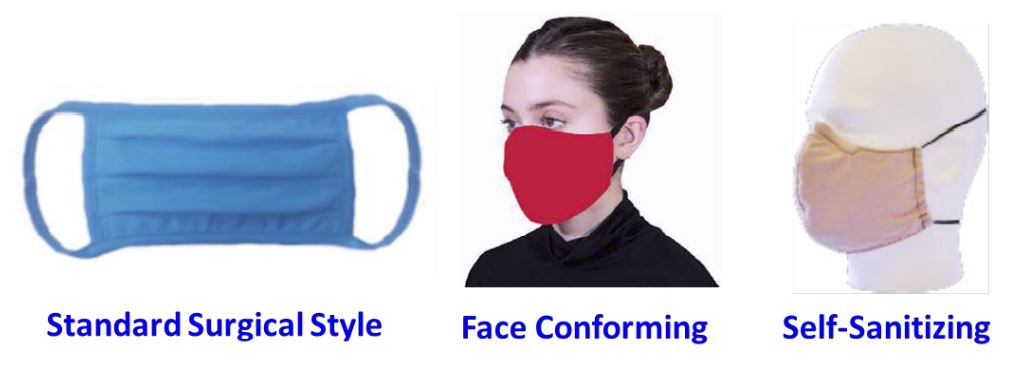by James A. Bacon
So, society is back to wearing masks. Governor Ralph Northam has mandated mask usage in public schools, while many universities and employers in Virginia are doing the same.
The K-12 mandate does make accommodations for people who are eating, drinking, sleeping, exercising, playing a music instrument, and/or is in state of unconsciousness. (I’m not making that up). Clearly, mandating masks represents an advance over closing the schools for another year. But Northam’s latest executive order provides no guidance on one important question. What kind of masks should children wear?
Go to Amazon.com and type in “disposable face masks.” You’ll find more than 1,000 products for sale. Not all masks are equally effective at protecting people and preventing viral spread. Insofar as some masks may accumulate germs if they go unwashed, they may be worse than useless for children’s health.
Will the mask mandate make children more safe, or less? I don’t know the answer, but I think it’s important to ask the question. To bone up on the issue, I delved into a June 2020 white paper, “Washable Face Masks,” an analysis of alternatives prepared by the Center for Applied Innovation in response to a request from Arlington County for 100,000 washable masks.
(By way of background, the Center for Applied Innovation is owned by Bob Morris, who sued the state after losing a bid for the Virginia Military Institute racism-investigation contract.)
Only N-95 masks provide much protection for the wearer. Good luck trying to get a school kid to keep one of those on his face all day. The alternative is wearing the kinds of masks examined in the white paper, which are designed mainly to protect others from your coughing, sneezing, wheezing, and expectorating.
Broadly speaking, there are three categories of non-N-95 masks: (1) surgical-style masks, (2) face-conforming masks, and (3) self-sanitizing face-conforming masks.
Loose-fitting surgical masks are not designed to provide a tight fit around the nose and mouth. Their purpose is to catch bacteria shed in liquid droplets and aerosols from the wearer’s nose and mouth, not to protect the wearer from inhaling airborne virus particles spewed by others. Says CAI: “Validated scientific studies show they provide partial to no protection for the mask wearer.”
Face-conforming masks provide somewhat better protection. But CAI warns that the quality of construction matters. Most masks are made of two layers of fabric, and in some cases with three, with an emphasis on how easy they are for wearers to breathe through.
Says CAI: “The majority of these face masks on the market today by re-purposed manufacturing operations are made to a layer density similar to what the CDC defines as a “T-shirt” or “home-made face mask” with the associated minimal level of protection. … The risk factors increase significantly when they are intended for use by employees in a work environment over the course of an entire work day.”
A third category of masks is the “self-sanitizing” mask, which are the only ones found in the CAI market survey that address the risk of face-touching and transfer of pathogens from the surface of the mask. Some vendors claim that their masks kill pathogens, and the evidence for copper-infused masks is positive, but in many cases the claims have not been scientifically verified.
I could find no guidance in Northam’s executive order of the Virginia Department of Health’s “Back to School Safety Guide” regarding which kind of masks children should wear. Apparently, the thinking is that any mask is better than none, and it may not matter much if the purpose is for the mask wearers to protect others, not themselves.
Parents of school children may have considerations of their own. For starters, price is likely to be a factor — especially for children in lower-income families. Second, parents will gravitate toward easy of acquisition. Can they find the masks at CVS or order them on Amazon? Third, parents will opt for the flimsier, thinner, easier-to-breathe-through masks that their children will wear with less protestation.
“We know that masking is an effective tool to prevent the spread of COVID-19, particularly among children who are not yet eligible for vaccination,” says Virginia Health Commissioner Dr. Norm Oliver.
Do we, in fact, know that? Both sides of the masks-in-schools debate can find studies to back up their point of view. Skeptics make the point that the more protective the mask, the more they restrict breathing and allow CO2 to build up. They also argue that masks, unless washed, will accumulate pathogens over time. And, if washed, their effectiveness as filters will diminish.
I would conjecture that the efficacy of the mask mandates likely vary with the type of masks worn and the diligence with which children wear them. I would bet that the vast majority of masks worn by Virginia school children will be the cheaper, flimsier, less protective variety. If that surmise is correct, will they make a difference?
I’m more impressed by what we don’t know than what we do know. If Virginia is going to mandate masks for school children, perhaps the state could take a tiny slice of the billions of helicoptered COVID-relief dollars to monitor the results to ensure that the mandate does what it’s supposed to do.



